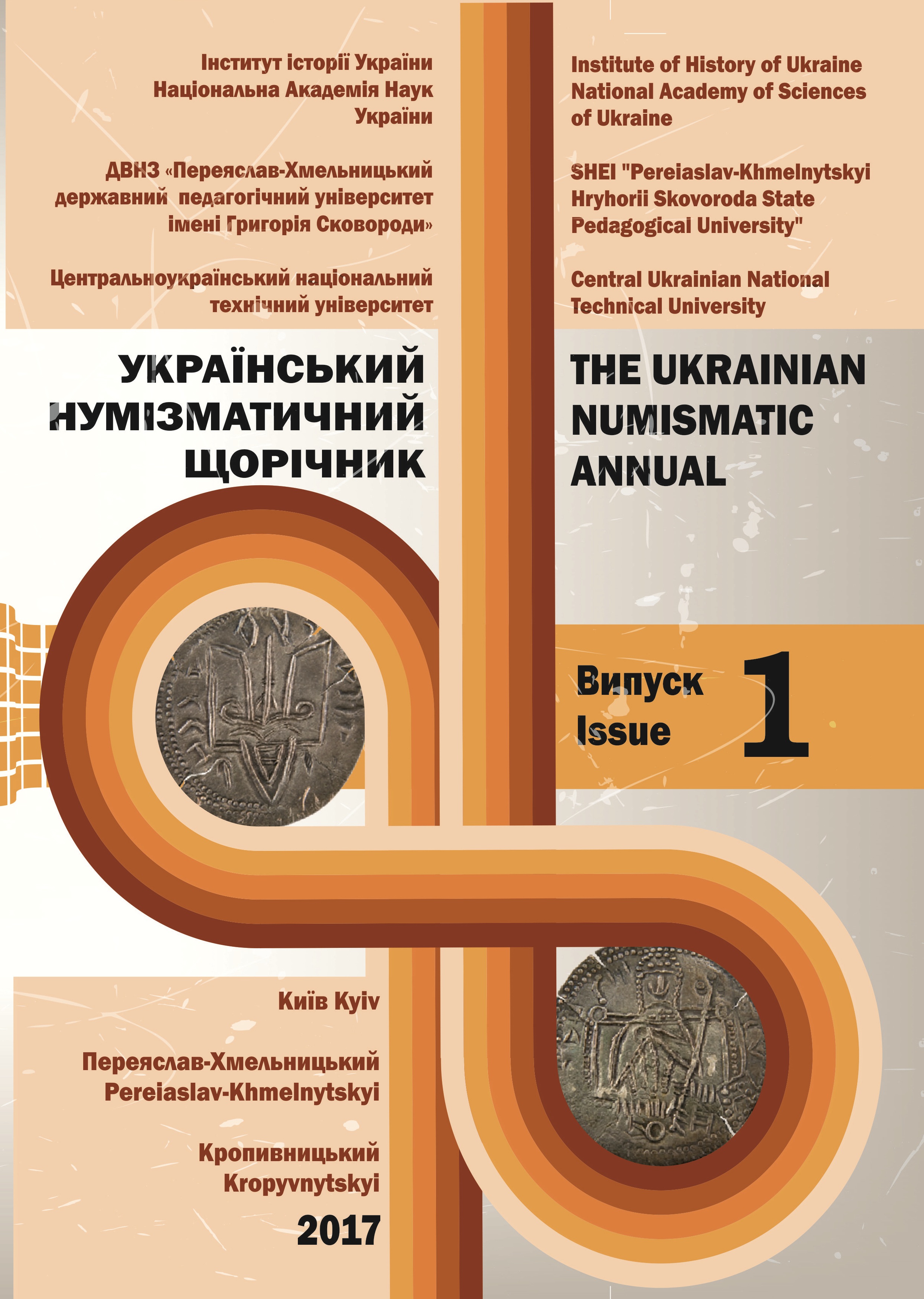Фальшиві монети Середнянського замку
COUNETFEIT COINS FROM THE SEREDNYE CASTLE
Author(s): Maria Zhilenko, Igor ProkhnenkoSubject(s): Archaeology, Economic history
Published by: ДВНЗ Переяслав-Хмельницький державний педагогічний університет імені Григорія Сковороди
Keywords: Sredneansky castle; archeology of Transcarpathia; fake coins; forging money;
Summary/Abstract: In the Western part of the village Sredniy in Uzhgorod district, in the Transcarpathian region, the ruins of the castle are located in the plains near the river Velya (formerly the Old Town). Today, the most respected building for its buildings (18.6 x 16.5 m), which is located in the central part of the architectural ensemble. It is surrounded by a locked patio with limited stone walls. The fortification system, in terms close to the square form, is represented by two lines of noticeably shoved shafts and ditches. In some places, the modern height of the shafts reaches 3.5 m. The external shaft defines the area of the monument – 200 x 200 m. The artificial water circulation system (the pipe of the set and drainage), which flowed from the river to the ditch on the western side and flowed out of them into The direction of the mill from the east is now already destroyed, resulting in a large part of the ditches being swamped. The archaeological expedition of the Uzhhorod National University was studied in 2008 and 2017. In the first field season, in order to find out the stratigraphic situation and proceeding from the possible excavation of the area, the study began with the territory of the castle court. The excavation #I (22 x 4 m) cut it from the southern corner of the central building to the ditch. The power of the cultural layer, which consisted of layers of clay of different colors, from gray to black (in the basis), reached 2.8 m. The erection of stone walls in the XVI century. It was stratigraphically confirmed by the discovery of the false Hungarian coin of 1543 Ferdinand I. (1526-1564). The next period (XVIIth – the beginning of the XVIIIth century) was determined by the quantitative increase in the collection of material (ceramic crockery, tiles and metal products). A relatively large percentage of counterfeit coins is not unique to these territories. It characterizes the specifics of the regional monetary circulation of the late Middle Ages and early modern times. Also it notes the active work of local counterfeiters whose work left traces in archaeological materials and in written sources. Found during the excavation of the castle counterfeit coins correspond to the chronological range of the operation of the monument, as well as reflect the activities of the falsifiers of the Upper Hungary, in whose products most massively present counterfeit silicon products. A small number of finds does not allow us to draw conclusions about the main periods of activation of the "thieves in the coin", but three of the four coins refer to the times of Ferdinand I, in Hungarian historiography called "the golden age of Hungarian counterfeiters." Specificization of the information on the quantitative and qualitative composition of false denominations in the Central lock is possible only after a systematic study of significant sites in different parts of the monument and replenishment of this group of finds with new instances.
Journal: Український Нумізматичний Щорічник
- Issue Year: 2017
- Issue No: 1
- Page Range: 86-97
- Page Count: 12
- Language: English, Russian, Ukrainian

